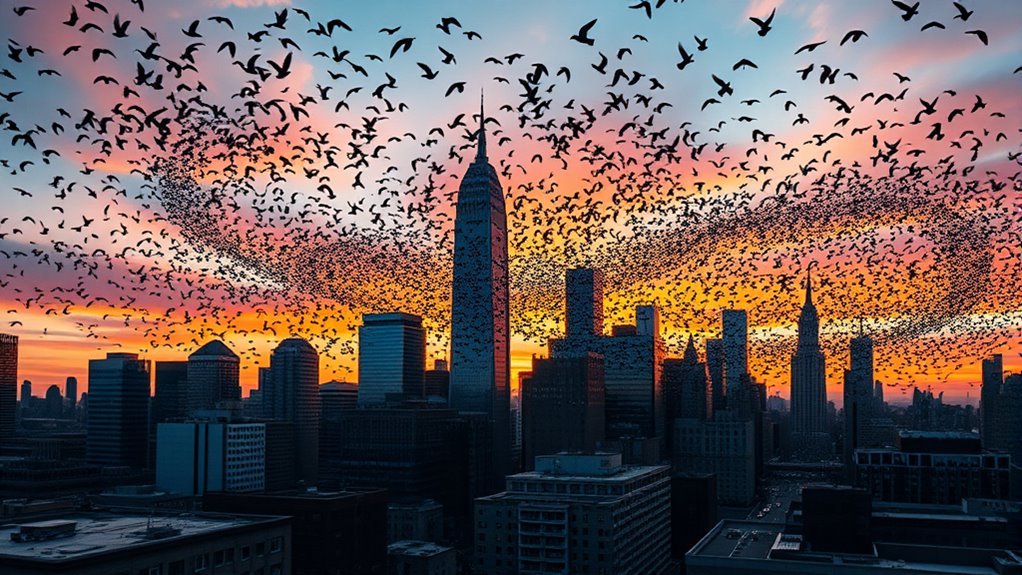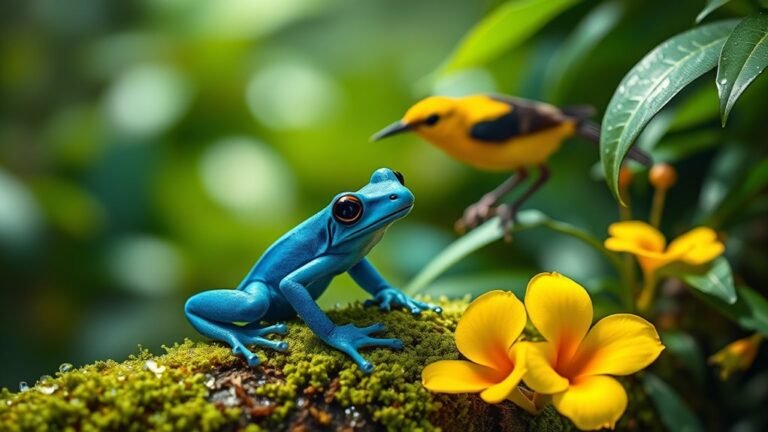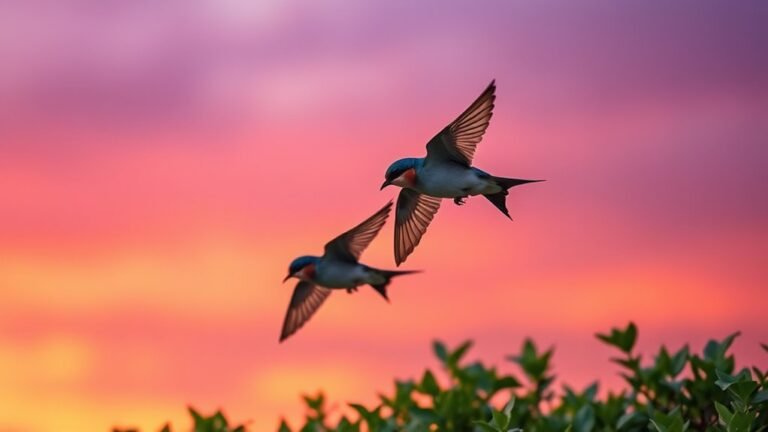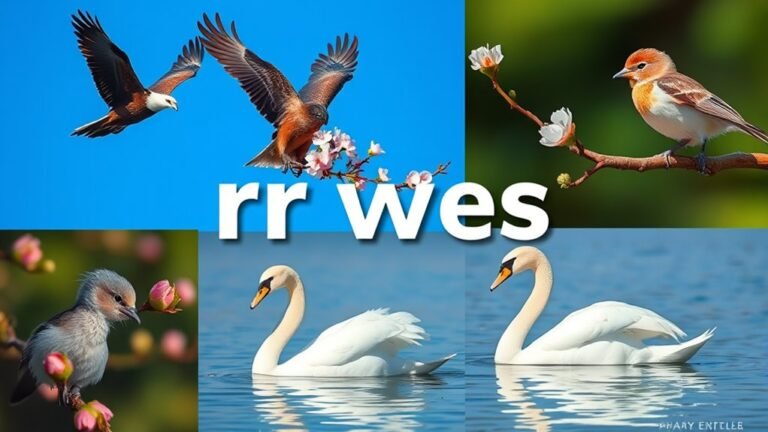The Starlings of New York: A Unique Perspective
Have you ever watched starlings flying through New York's skyline? These smart birds came to the city over a century ago and have adjusted well to urban life. Their beautiful flights and social behaviors show nature's ability to thrive among buildings and noise. However, as the city changes, the future of these birds is uncertain. What lies ahead for starlings in this shifting urban environment?
Key Takeaways
- Common starlings were introduced to NYC in the 1890s, reflecting human desire to connect with nature in urban areas.
- Their adaptability allows them to thrive in city environments by nesting in urban structures and foraging food scraps.
- Starlings create mesmerizing aerial displays, showcasing strong social dynamics and community cooperation for safety among flocks.
- They contribute to the urban ecosystem by controlling pests and supporting seed dispersal, despite competing with native bird species.
- The future of starlings in NYC depends on habitat preservation and sustainable practices to ensure their survival amidst urban challenges.
The History of Starlings in New York City
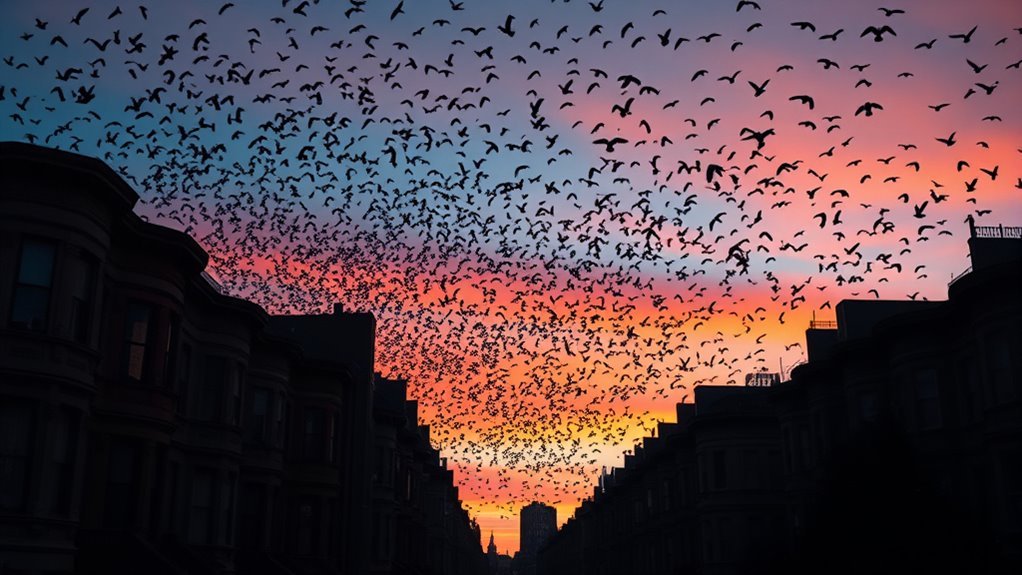
As you walk through New York City, pay attention to the common starling. This bird has a unique history. It arrived in the 1890s, brought here by fans of Shakespeare.
These birds weren't just a lighthearted choice; they show how people want to connect with nature in busy cities.
Starlings adapted well to urban life and became part of our culture. They appear in songs, books, and various forms of art. Their existence represents resilience and adaptability.
Starlings remind us that we share our environment with other species. By learning their story, you join a conversation about urban wildlife and the connections we all share.
Enjoy spotting these fascinating birds as you explore the city!
Adaptations to Urban Life
Starlings live well in New York City. They show strong adaptability to city life.
These birds nest in various urban places, like building ledges and eaves. They use discarded materials to create their nests. This resourcefulness helps them thrive.
Starlings also adapt their diets. They eat food scraps from fast-food places and enjoy the natural resources found in parks.
Their ability to find food and shelter in an urban setting is inspiring. They remind us that life can thrive even in busy places.
The Social Dynamics of Starling Flocks
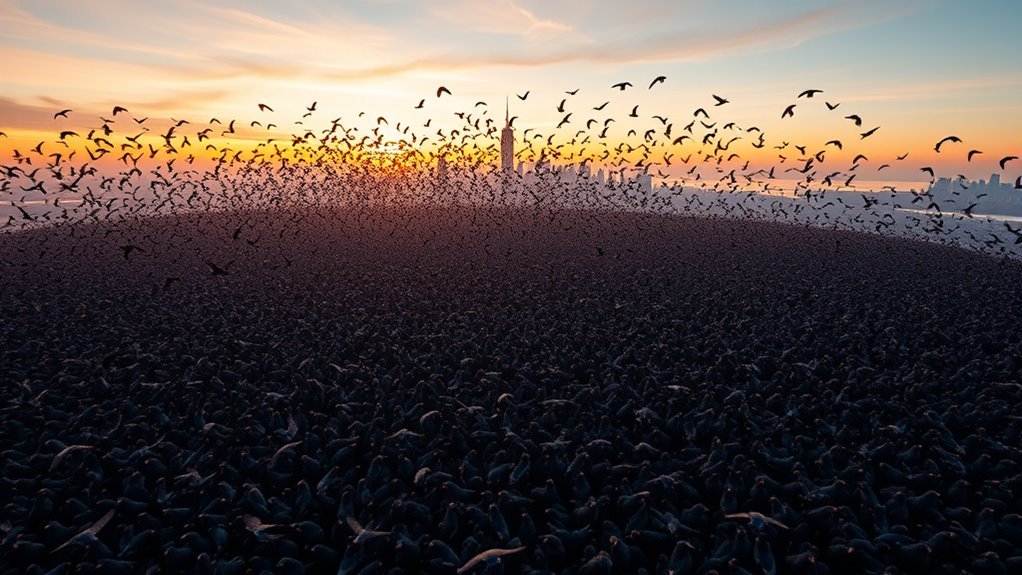
In cities like New York, starling flocks create stunning aerial displays. These patterns showcase how starlings work together. Some birds lead the group by reacting to dangers and changes in the environment.
They help keep the flock safe and unified. This teamwork creates a sense of community, both among the birds and for observers like you. Watching them move as one allows you to appreciate their strong connections.
Understanding these social roles highlights the starlings' ability to thrive in urban areas and encourages respect for their lively existence.
Ecological Impact of Starlings
Starlings impact urban ecosystems in various ways. They eat insects, which can help reduce pest populations. They also spread seeds, supporting greenery in cities.
However, starlings compete with native birds for food, which can limit resources for those species. Starlings adapt well to different environments, showing their resilience.
By recognizing these effects, we can understand starlings' role in our urban spaces. Supporting ecological balance helps all species thrive together.
Appreciating starlings enriches our connection to nature in the city.
Starlings and Their Relationship With Humans

As city residents, you may often see flocks of starlings moving gracefully through urban areas.
These birds showcase adaptability and resilience, qualities many of us appreciate in our lives. Watching starlings can be a rewarding experience, highlighting the beauty of nature in a concrete environment.
Their coordinated flight patterns capture your interest and connect you to the wider ecosystem. Interacting with these birds can create a sense of community, reminding you that all living things share this space.
Observing Starlings: Best Locations and Tips
To observe starlings in New York, visit these four locations. Their shiny feathers and lively groups offer a fascinating sight.
- Central Park at Dusk: Watch starlings gather before sunset for their evening roost.
- Prospect Park: Look near the lake where starlings often search for food.
- Battery Park: Spot large flocks flying over the Hudson River.
- Brooklyn Bridge Park: See starlings as they soar and move gracefully in the sky.
Bring binoculars or a camera to better enjoy these birds.
The Future of Starlings in an Urban Environment
Starlings have adapted well to city life, but their future in places like New York is uncertain. Changes in the environment and human activities pose challenges for them. These birds face habitat loss and shifts in climate, which can disrupt their numbers.
You can help starlings by creating green spaces and supporting sustainable practices. Each tree you plant or rooftop garden you care for becomes a safe spot for them.
These actions not only benefit starlings but also enhance the quality of life in our cities. Let's come together to protect these birds and the connection they bring to urban life. Your choices can have a positive impact.
Frequently Asked Questions
Do Starlings Have Any Natural Predators in New York City?
In New York City, starlings face natural threats mainly from hawks and cats. These predators play a role in the urban ecosystem, affecting the population of starlings. This interaction highlights how nature adapts and persists in urban settings.
What Other Cities Have Significant Starling Populations?
If you want to learn about significant starling populations, check out cities like Chicago and London. Chicago has active starling colonies, and London hosts large roosts. Visiting these places highlights the charm and adaptability of starlings and their unique relationships with urban spaces. You can enjoy watching these birds interact with their environments while appreciating their vibrant presence in city life.
How Do Starlings Communicate Within Their Flocks?
Starlings communicate using clear vocal patterns and mimic sounds. Watching their interactions shows how they build bonds within their flock. This communication helps them feel connected and strengthens their community. Observing their behavior can give you a better understanding of their social life.
What Foods Do Starlings Prefer in Urban Areas?
Starlings in urban areas prefer certain foods. They often eat fruits, insects, and discarded food. These birds are adaptable and resourceful. They find food scraps in busy city environments. Staying alert for food sources helps them thrive in cities. Their eating habits reflect their ability to make the most of their surroundings.
Are There Any Conservation Efforts for Starlings Globally?
Global initiatives focus on preserving habitats for starlings. These efforts aim to protect both urban areas and natural environments. By supporting these initiatives, you help starlings thrive and create a better community for all species. Together, we can ensure these birds have a safe place to live and contribute to biodiversity.

Hello, I’m Emily Price, the founder of Birds Affection. As a passionate bird enthusiast and spiritual seeker, I’ve always been fascinated by the symbolic meanings and mystical connections between birds and our lives. On this website, I share my knowledge and insights on the spiritual significance of various bird species, exploring their roles as messengers, guides, and teachers. Through my writing, I aim to inspire and educate others on the profound wisdom and beauty that birds bring to our world. Join me on this journey as we delve into the enchanting realm of bird symbolism and discover the hidden meanings behind these magnificent creatures.

